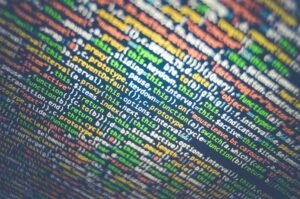Supervised and Unsupervised Learning: Real Life Examples
Artificial Intelligence and Machine Learning are transforming various industries by enabling computers to learn from data and make intelligent decisions. Two fundamental types of machine learning are supervised learning and unsupervised learning. In supervised learning, the algorithm is trained on labeled data, where the input and output are known. Unsupervised learning, on the other hand, deals with unlabeled data, seeking patterns and relationships without any predefined classifications.
Key Takeaways
- Supervised learning uses labeled data while unsupervised learning uses unlabeled data.
- Supervised learning involves training an algorithm to make predictions based on known input-output pairs.
- Unsupervised learning aims to discover patterns and relationships in data without predefined classifications.
- Both types of learning have real-life applications and are used extensively in various industries.
Supervised Learning Examples
Supervised learning algorithms are widely used in various domains, including:
- Email Spam Filtering: Spam filters can be trained using labeled data to classify incoming emails as spam or not spam.
- Medical Diagnosis: Doctors can employ supervised learning algorithms to analyze patient data and make accurate diagnoses based on historical records.
- Text Sentiment Analysis: Companies can use sentiment analysis algorithms to automatically classify customer reviews as positive, negative, or neutral.
One interesting application of supervised learning is in autonomous driving. Self-driving cars are trained using vast amounts of labeled data, allowing them to make decisions based on real-time sensor inputs.
Unsupervised Learning Examples
Unsupervised learning techniques are equally valuable and find applications in various scenarios:
- Market Segmentation: Companies can use unsupervised learning algorithms to group customers based on similar behaviors and preferences.
- Anomaly Detection: Credit card companies can utilize unsupervised learning to detect fraudulent transactions by identifying anomalous patterns.
- Image and Document Clustering: Unsupervised learning can automatically group similar images or documents together for efficient organization and retrieval.
In the world of customer recommendation systems, unsupervised learning can be fascinating. By analyzing past purchases and user preferences, recommender systems can suggest personalized product recommendations.
Real-Life Applications
| Industry | Application |
|---|---|
| E-commerce | Product recommendation systems |
| Finance | Credit scoring and risk assessment |
| Healthcare | Patient monitoring and disease prediction |
| Industry | Application |
|---|---|
| Marketing | Market basket analysis |
| Manufacturing | Anomaly detection in equipment |
| Social Media | Topic modeling and trend detection |
| Learning Type | Definition | Examples |
|---|---|---|
| Supervised Learning | Uses labeled data to train models for making predictions or classifications | Spam filtering, medical diagnosis, sentiment analysis |
| Unsupervised Learning | Uses unlabeled data to find patterns and relationships without predefined classifications | Market segmentation, anomaly detection, image clustering |
In conclusion, supervised and unsupervised learning are powerful techniques that enable machines to learn from data in different ways. While supervised learning is concerned with making predictions based on known data, unsupervised learning discovers hidden patterns without any predefined labels. These techniques have revolutionized various industries and continue to drive advancements in the field of artificial intelligence.

Common Misconceptions
Supervised Learning:
One common misconception about supervised learning is that it requires a massive amount of labeled data in order to be effective. While it is true that supervised learning algorithms need labeled data to train on, the amount of data required may vary depending on the complexity of the problem being tackled.
- Supervised learning can be applied to various domains, including image recognition and natural language processing.
- Supervised learning algorithms rely on labeled data to make predictions or classifications.
- Supervised learning models need to be regularly retrained as new labeled data becomes available.
Unsupervised Learning:
Another misconception about unsupervised learning is that it is only useful for clustering data. While clustering is indeed one of the applications of unsupervised learning, it is not the only one. Unsupervised learning algorithms can also be used for dimensionality reduction, anomaly detection, and association rule mining.
- Unsupervised learning algorithms attempt to find patterns and structures within unlabeled data.
- Unsupervised learning can be used in exploratory data analysis to gain insights and discover hidden patterns.
- Self-organizing maps and k-means clustering are popular unsupervised learning algorithms.
Supervised vs Unsupervised Learning:
A common misconception is that supervised and unsupervised learning are distinct and unrelated techniques. In reality, they are often used together as complementary approaches in machine learning projects. Supervised learning can be used to label data, which can then be used as training data for unsupervised learning algorithms.
- Supervised learning requires labeled data, while unsupervised learning does not.
- Both supervised and unsupervised learning can be used for data preprocessing and feature engineering.
- The combination of supervised and unsupervised learning is known as semi-supervised learning.
Applicability to Real-Life Situations:
There is a misconception that supervised and unsupervised learning are only applicable to certain fields like computer science or artificial intelligence. However, these techniques have real-life examples in various domains, ranging from healthcare to finance and even entertainment.
- In healthcare, supervised learning can be used for disease diagnosis based on patient symptoms and medical test results.
- Unsupervised learning can help financial institutions detect fraudulent transactions by identifying anomalous patterns in transaction data.
- Movie recommendation systems utilize machine learning techniques, both supervised and unsupervised, to suggest personalized films based on users’ viewing history and preferences.

Table: Supervised Learning Applications
Supervised learning is a machine learning technique where a model learns from labeled data to make predictions or classifications. Here are some real-life examples of supervised learning applications:
| Application | Description |
|---|---|
| Email Spam Filtering | Determines whether an incoming email is spam or not based on past labeled data. |
| Stock Market Prediction | Uses historical data to predict future stock prices and trends. |
| Language Translation | Translates text or speech from one language to another by learning from pairs of translated sentences. |
Table: Unsupervised Learning Applications
Unsupervised learning is a machine learning technique where a model learns patterns or structures in data without explicit labels. Here are some real-life examples of unsupervised learning applications:
| Application | Description |
|---|---|
| Customer Segmentation | Clusters customers based on similar buying patterns and demographics, helping businesses understand their target audience. |
| Image Recognition | Detects patterns and similarities in images, useful for tasks like facial recognition or object detection. |
| Anomaly Detection | Identifies unusual patterns or outliers in data, used in fraud detection or network intrusion detection. |
Table: Supervised vs. Unsupervised Learning
Supervised and unsupervised learning have distinct differences. The following table outlines some of these differences:
| Supervised Learning | Unsupervised Learning | |
|---|---|---|
| Training Data | Labeled | Unlabeled |
| Goal | Predict or classify | Discover patterns or structures |
| Examples | Email spam filtering, stock market prediction | Customer segmentation, image recognition |
Table: Supervised Learning Algorithms
Supervised learning employs various algorithms to analyze labeled data. Here are some commonly used supervised learning algorithms:
| Algorithm | Use Case |
|---|---|
| Linear Regression | Predicting numerical values like housing prices based on input features. |
| Decision Trees | Classifying data into categories using hierarchical decision rules. |
| Support Vector Machines | Identifying boundaries between classes in a dataset. |
Table: Unsupervised Learning Algorithms
Unsupervised learning algorithms help reveal hidden patterns within data. Here are some frequently used unsupervised learning algorithms:
| Algorithm | Use Case |
|---|---|
| K-means Clustering | Segmenting data into distinct groups based on similarity. |
| Principal Component Analysis | Reducing the dimensionality of data while preserving important information. |
| Association Rules | Discovering relationships or patterns between items in a dataset. |
Table: Benefits of Supervised Learning
Supervised learning provides several advantages in various domains. Here are some noteworthy benefits:
| Benefit | Explanation |
|---|---|
| Predictive Accuracy | Supervised models can achieve high accuracy when provided with sufficient labeled training data. |
| Interpretability | Supervised learning algorithms often produce models that can be easily understood and interpreted by humans. |
| Guidance in Decision Making | Supervised models can assist in making informed decisions by providing reliable predictions or classifications. |
Table: Benefits of Unsupervised Learning
Unsupervised learning offers unique advantages that make it valuable in various applications. Here are some notable benefits:
| Benefit | Explanation |
|---|---|
| Pattern Discovery | Unsupervised learning helps identify hidden patterns or structures in data that may not be apparent. |
| Data Exploration | Unsupervised methods allow for exploratory analysis to gain insights into the data without predefined labels. |
| Clustering Analysis | Unsupervised models assist in grouping similar data points, aiding in data segmentation or customer profiling. |
Table: Supervised Machine Learning in Healthcare
Supervised learning finds numerous applications in healthcare, improving diagnostics and patient care. Check out these examples:
| Application | Description |
|---|---|
| Disease Diagnosis | Predicts diseases like cancer or diabetes based on patient data, enabling early detection and effective treatment. |
| Drug Research | Identifies potential drug candidates by predicting their effectiveness and potential side effects. |
| Medical Image Analysis | Aids in interpreting medical images, such as X-rays or MRIs, for accurate diagnosis. |
Table: Real-Life Applications of Unsupervised Learning
Unsupervised learning is utilized in diverse fields to extract useful insights from unlabeled data. Explore some real-life applications:
| Application | Description |
|---|---|
| Social Network Analysis | Clusters users based on their connections and interests, enabling personalized recommendations or targeted advertising. |
| Market Basket Analysis | Identifies item associations in customer transactions, leading to strategies like product bundling or cross-selling. |
| Anomaly Detection in IoT | Detects abnormal behavior or patterns in Internet of Things (IoT) devices, enhancing security and system reliability. |
In conclusion, supervised and unsupervised learning are powerful machine learning techniques with numerous real-life applications. Supervised learning enables accurate predictions and classifications, whereas unsupervised learning uncovers hidden patterns and structures in data. Both approaches have their respective benefits and play a significant role in advancing various fields, including finance, healthcare, and technology.
Frequently Asked Questions
What is supervised learning?
Supervised learning is a type of machine learning algorithm that involves training a model using labeled data. The algorithm learns from the input-output pairs provided in the training data to make predictions or classifications on new, unseen data.
Can you provide an example of supervised learning in real life?
One example of supervised learning in real life is email spam filtering. In this case, the algorithm is trained using a dataset of labeled emails (spam or non-spam) and uses the features of each email (words, sender, subject, etc.) to classify new incoming emails as either spam or non-spam.
What is unsupervised learning?
Unsupervised learning is a type of machine learning where the algorithm learns to find patterns or structure in unlabeled data. Unlike supervised learning, there are no target outputs or labels provided during training.
What is an example of unsupervised learning in real life?
An example of unsupervised learning in real life is customer segmentation in marketing. In this case, the algorithm analyzes customer data (purchase history, demographics, etc.) to identify distinct groups or segments based on similarities between customers. This information can then be used for targeted marketing campaigns.
What are the benefits of supervised learning?
Supervised learning allows for accurate predictions on new, unseen data by learning from labeled examples. It can be advantageous in tasks that require classification, regression, or prediction, such as fraud detection, medical diagnosis, and stock market forecasting.
What are the benefits of unsupervised learning?
Unsupervised learning can discover hidden patterns, relationships, and structures in data. It is useful for tasks like anomaly detection, clustering, and data exploration. It can also help in feature extraction and dimensionality reduction, which are important steps in preprocessing data for other machine learning algorithms.
What types of algorithms are commonly used in supervised learning?
Some commonly used algorithms in supervised learning include linear regression, logistic regression, decision trees, random forests, support vector machines (SVM), and artificial neural networks.
What types of algorithms are commonly used in unsupervised learning?
Commonly used algorithms in unsupervised learning include clustering algorithms like k-means clustering and hierarchical clustering, as well as dimensionality reduction techniques such as principal component analysis (PCA) and t-SNE.
Can supervised and unsupervised learning be combined?
Yes, supervised and unsupervised learning can be combined in what is known as semi-supervised learning. This approach takes advantage of a small amount of labeled data and a larger amount of unlabeled data to improve the performance of the learning model.
How can I determine whether to use supervised or unsupervised learning for my project?
The choice between supervised and unsupervised learning depends on the nature of the problem you are trying to solve and the availability of labeled data. If you have plenty of labeled data and want to make specific predictions or classifications, supervised learning is more appropriate. On the other hand, if you are interested in finding patterns or structures in unlabeled data, unsupervised learning may be the better choice.




